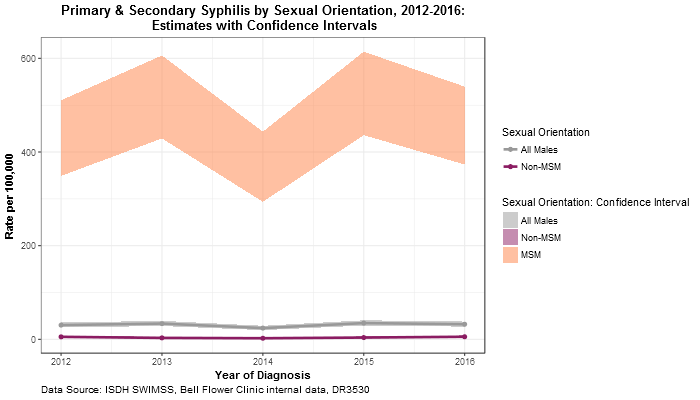Response 24 Seven: A Report to the Community (Marion, 2008-2012)A report to the Community regarding the Marion County Public Health Department delivering on all of the ten essential services of public health. These services are: monitoring health, diagnosing and investigating health hazards, informing and educating about health issues, mobilizing partnerships, developing health policies, enforcing environmental laws, access to care, assuring a competent public health workforce, evaluating health services, and researching public health concerns.
 Syphilis, Primary & Secondary in Males by Sexual Orientation (Marion County, 2012-2016)
Syphilis, Primary & Secondary in Males by Sexual Orientation (Marion County, 2012-2016)About 90% of primary and secondary syphilis cases in Marion County are in men. Case rates of primary and secondary syphilis for men who have sex with men (MSM) have remained much higher than for men who have sex with women only (MSW). In 2012, the estimated rate for MSM was about 78 times higher than for MSW, and in 2016, the estimated rate for MSM was about 80 times higher than for MSW. [DR3530]